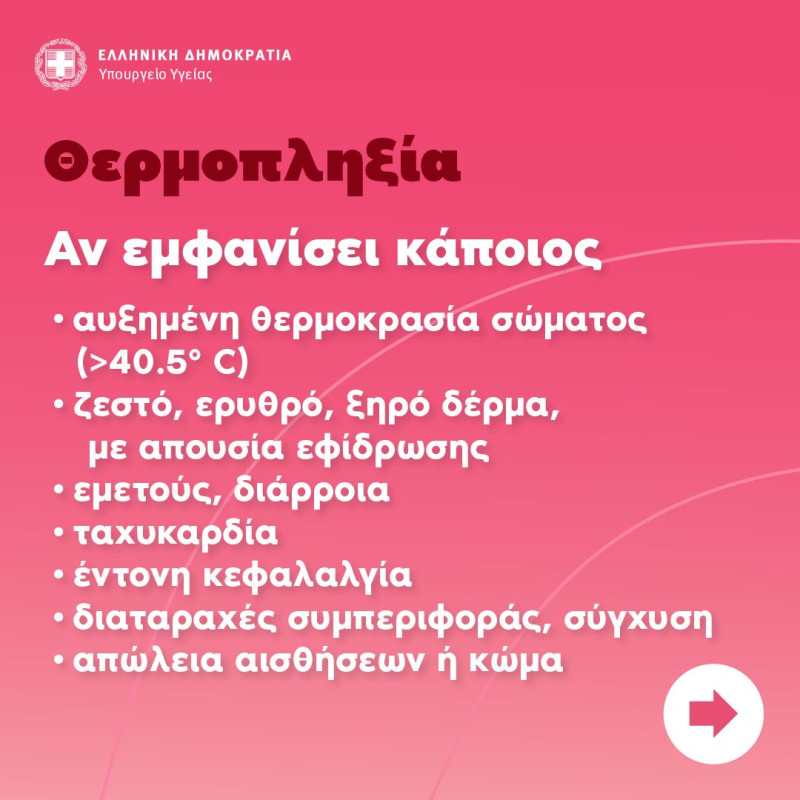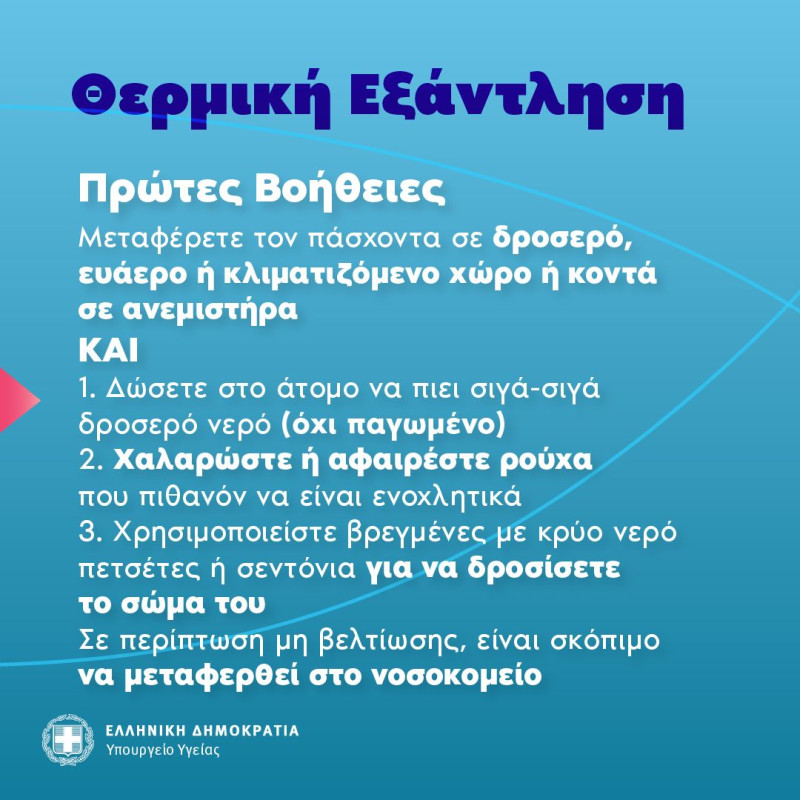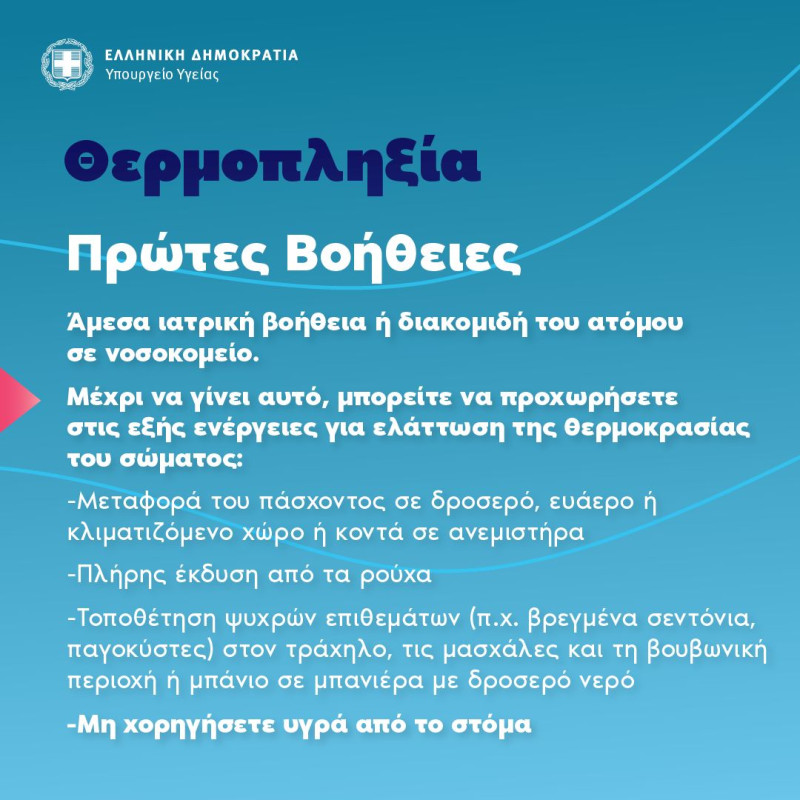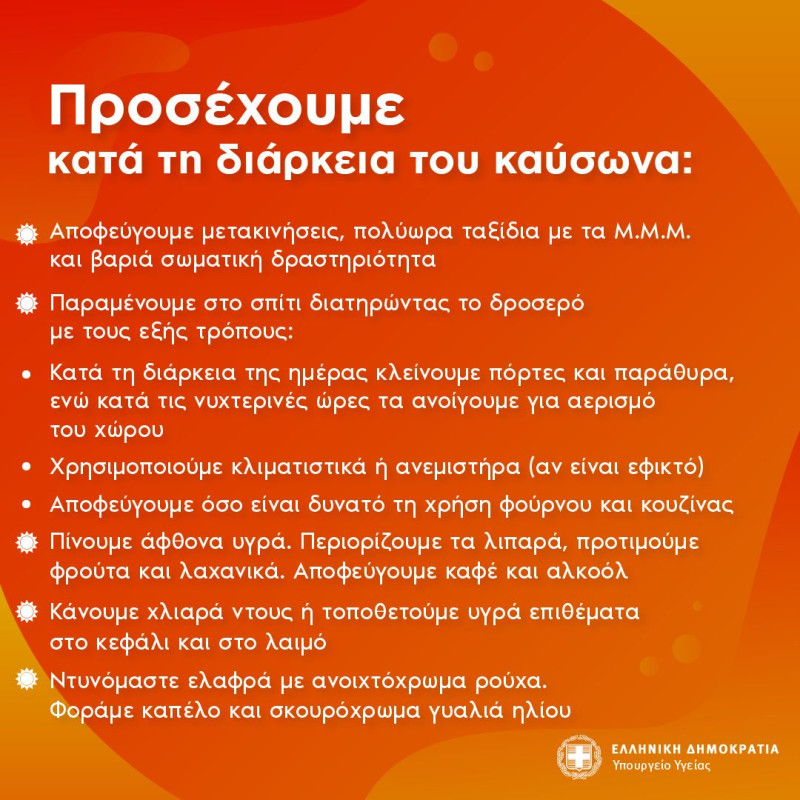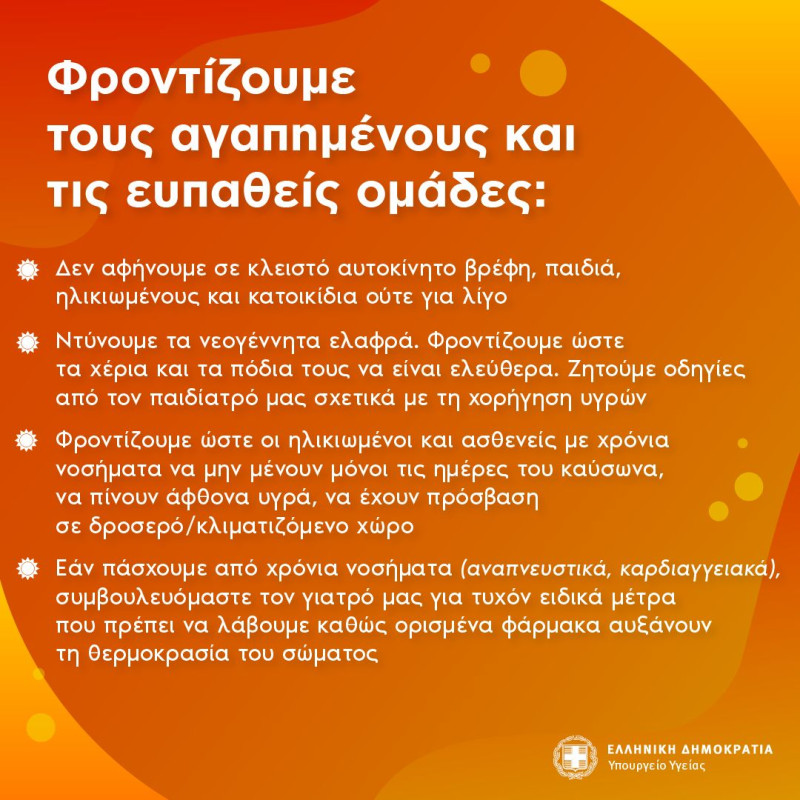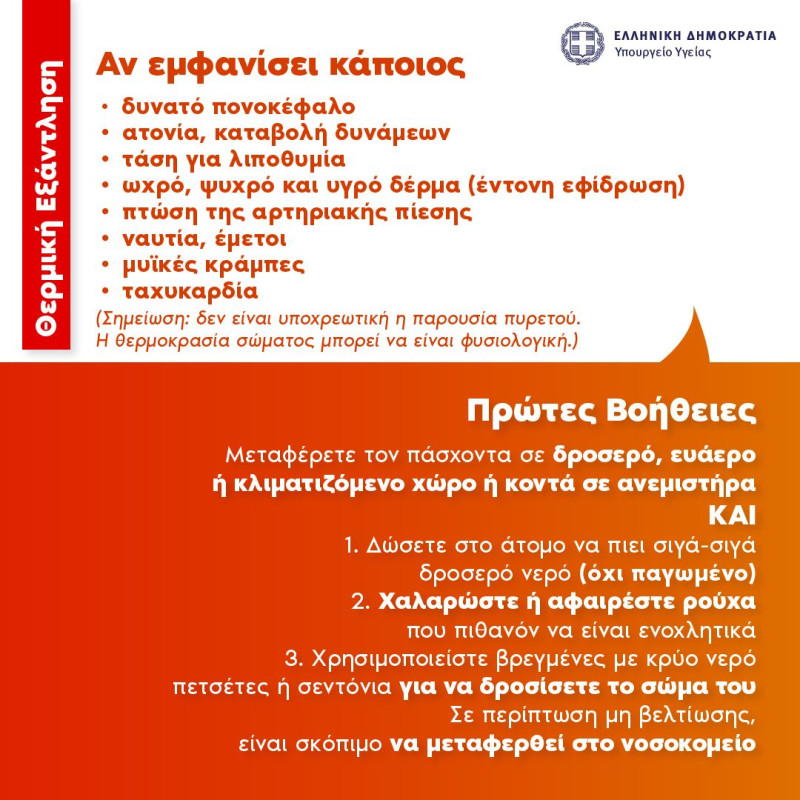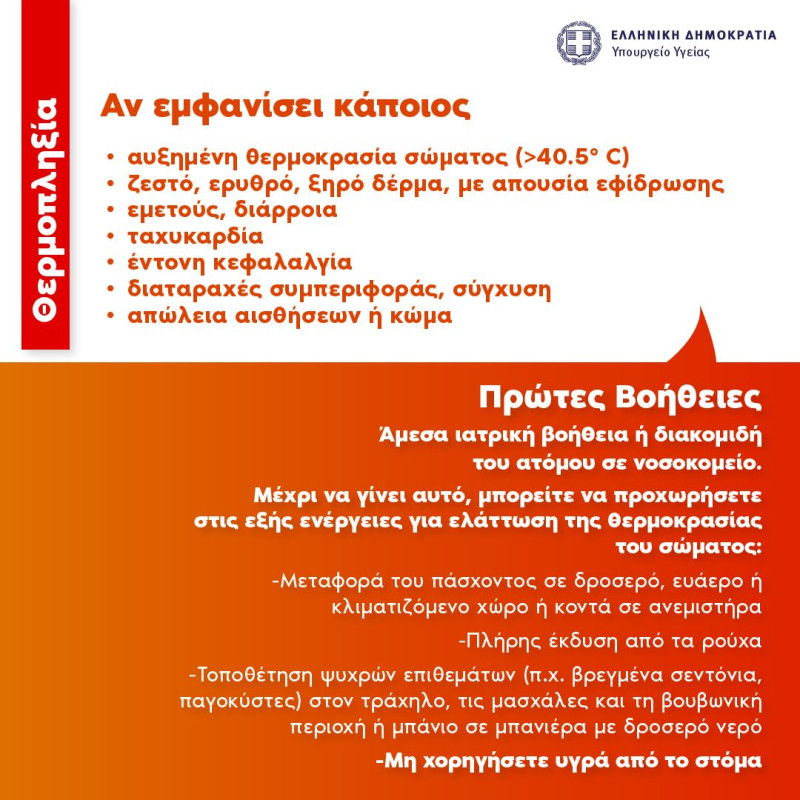What are the symptoms to look out for – When to contact our doctor – What to do when you don’t feel well
Detailed instructions in order to avoid the possibility of heat stroke during the multi-day heat wave that affects our country, the Ministry of Health issued.
The following tables detail the symptoms for each case and how we should react, or help our fellow citizens.
Guidelines for precautionary measures
Pathological conditions caused by high temperatures and instructions for dealing with them
When the temperature of the environment rises to limits not tolerated by the human body in synergy with other factors (humidity, apnea, etc.), they are created pathological conditions varying degrees of severity, which can lead to severe illness and even death.
Initial symptoms may be: severe headache, weakness, feeling overwhelmed, tendency to faint, drop in blood pressure, nausea, vomiting and rapid heartbeat.
The heat stroke syndromemanifested by: sudden increase in body temperature (>40.5 ° C ), red, hot and dry skin (sweating has stopped), dry swollen tongue, rapid pulse, rapid breathing, intense thirst, headache, nausea, vomiting, dizziness, confusion, inability to orient and speak clearly, aggressive or strange behavior, convulsions, loss of consciousness or coma.
First aid
The treatment of individuals who present the above symptoms, when the ambient temperature is high, should preferably be done in nursing institutionsbut as first aid until they are transported to them immediate measures to reduce body temperature should be applied:
Transfer the heatstroke immediately to a cool placeairy, shady preferably air-conditioned (above link), complete undressing, applying ice packs or cold packs to the neck, armpits and groin area, soaking in a cold water bath or shower or spraying with cold water, providing small sips of cool fluids (water or diluted fruit juice, 1 part juice to
4 parts water) if it can be swallowed etc.
Who is at risk from high temperatures:
– elderly
– babies and young children
– pregnant and lactating women
– people who are overweight or obese
– people who work or exercise vigorously in a hot environment
– people with chronic diseases (cardiovascular diseases, hypertension, diabetes mellitus, lung diseases, kidney diseases, liver diseases, mental illness, dementia, alcoholism or drug abuse, etc.)
– people with acute illness, such as infection with fever or gastroenteritis; (diarrhea and/or vomiting)
– people who for for purely medical reasons they take medication for their chronic illnesses, such as e.g. diuretics, anticholinergics, psychotropic drugs, hormones (including insulin and antidiabetic tablets). Especially during the period of high ambient temperatures, they should consult their doctor about the possible modification of the dosage.
General precautions:
– Stay in air-conditioned areas.
– Dress light and comfortable with light-colored clothing made of porous material, to facilitate the ventilation of the body and the evaporation of sweat.
– Use of a hat from material that allows ventilation of the head.
– Use of black or dark sunglasses with lenses that protect against solar radiation.
– Avoiding sun exposureespecially for infants and the elderly.
– Avoiding heavy physical work.
– Avoiding long journeys by public transport which do not have air conditioning.
– The public transport must ensure that the air conditioning is working properly taking into account the aforementioned in the first paragraph of the general instructions (above), for the better service of the public.
– Lots of lukewarm showers during the day and applying cool patches to the head and neck.
– Small in quantity and light meals low in fat, with an emphasis on fruit and vegetable intake.
– Taking plenty of fluids (of water and fruit juices), especially by infants and the elderly and avoiding alcohol. If sweating is profuse, the additional intake of small doses of salt is recommended.
– People suffering from chronic diseases should consult their treating physicianfrom which they will receive additional instructions depending on their condition as well as instructions on the possible change in the dosage of their medication.
– The elderly that they are not left alone but that someone is provided for their daily care.
– The workplaces they must have air conditioners or simple fans, preferably ceiling fans, and in any case natural ventilation of the premises. The same applies to institutions, which treat newborns, infants, children, the elderly and people with special needs.
Special emphasis should be given when high temperatures are combined with phenomena of increased levels of atmospheric pollution.
Specifically:
– For case of exceeding the limits of ozone in the atmospheric air, the Ministry of Health has issued relevant instructions for informing the public with precautionary measures especially for vulnerable population groups, which are as follows:
“People with respiratory and cardiovascular diseases and in general people sensitive to air pollution it is recommended that they remain indoors and avoid outdoor traffic. Also, it is recommended that the above people as well as children avoid intense physical exercise, which can cause irritation of the respiratory tract and lead to respiratory problems.”
– For protection of public health from suspended particles (A.S.10), the Ministry of Health has issued the no. prot. DYG2/G.P.ok.3191/14.1.14 (AD: VIPSPTHOS1) circular with recommendations to the public.
Recommendations for public information and precautionary measures are posted on the following website of the Ministry, on any day of the year when concentrations of suspended particles are exceeded, from which the public can be informed: (www.moh.gov.gr/articles/health/dieythynsh-dhmosias-ygieinhs/ygieinhperiballontos/prostasia-poiothtas-aera/3005-systaseis-gia-thn-atmosfairikh-rypansh).
Source: Skai
I have worked as a journalist for over 10 years, and my work has been featured on many different news websites. I am also an author, and my work has been published in several books. I specialize in opinion writing, and I often write about current events and controversial topics. I am a very well-rounded writer, and I have a lot of experience in different areas of journalism. I am a very hard worker, and I am always willing to put in the extra effort to get the job done.


